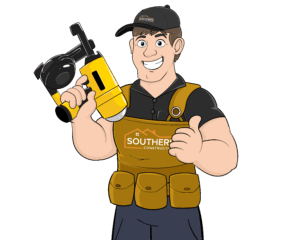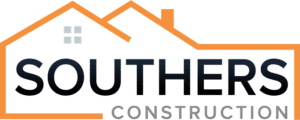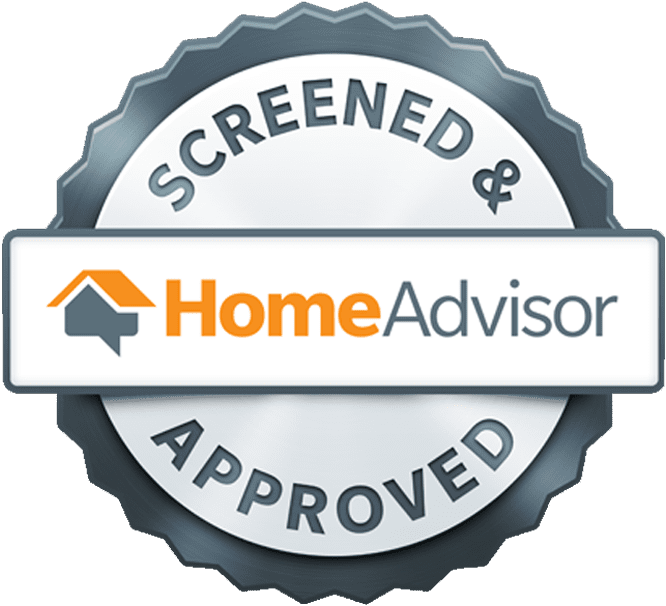What Roof Financing Options Are Available?
“Saving for a rainy day” really hits home when it comes to replacing a leaky roof. Consider roof financing if your household emergency fund cannot cover the full cost. According to home repair website HomeAdvisor, roof replacement costs vary from $5,569 to $11,415 nationwide.
As long as you’ve got tarps and buckets in place to stem water damage, you can contemplate roof financing options carefully and choose the one that’s best for you.
8 options for roof financing
- 1. Home equity loan
- 2. Home equity line of credit
- 3. Cash-out refinance
- 4. FHA 203(k) loan
- 5. FHA Title 1 loan
- 6. Personal loan
- 7. Contractor financing
- 8. Credit card
1. Home equity loan
A Home equity loans, also called second mortgages, use the equity in your home as collateral for a loan that you repay in fixed monthly payments. The repayment term of a home equity loan generally ranges from five to thirty years.
Calculate your home equity by subtracting the amount you still owe on your mortgage from the value of your home. In the case of a $300,000 home with $200,000 in mortgage debt, your equity is $100,000.
In most cases, lenders will only lend you up to 85% of the value of your home minus your outstanding mortgage balance. This means that for a $300,000 house, $300,000 times 85% would equal $255,000, and then $255,000 minus $200,000 equals $55,000.
Home equity loans normally have fixed interest rates, so you’ll know what you’ll pay each month before accepting the loan. If you itemize deductions, you may be able to deduct the interest you pay on your home equity loan from your federal income taxes. Find out if this is possible for your particular situation by speaking with a financial professional.
There are, however, a few disadvantages to using home equity loans for roof financing. They often require a lengthy approval process, like a first mortgage, and can take two to four weeks to close. If you cannot pay back your roof-loan payments for any reason, you could lose your house if you take out a home equity loan.
2. Home equity line of credit
HELOCs use home equity as collateral, but instead of providing a lump-sum loan, they establish a revolving credit account that can be used like a credit card. With a HELOC, you can borrow up to 85% of the home’s value less the remaining mortgage balance, just like with a home equity loan.
As long as you meet a monthly minimum payment, you can make payments against the account’s spending limit during the draw period, which typically lasts 10 years. You can pay off the balance as quickly or slowly as you want, as long as you meet a monthly minimum payment.
You must pay off the outstanding balance either in a lump sum or in a series of fixed monthly payments after the draw period ends.
A HELOC may have low promotional rates for the first 12 months, after which borrowers may see significant annual increases. Combined with the variable-balance nature of all rotating accounts, it can be difficult to predict how much a HELOC will cost you over time.
If you use a HELOC to finance a roof (or any other home improvement project), you may be able to deduct your interest payments. Find out if you are eligible for a HEL by consulting with a financial professional.
3. Cash-out refinance
With a cash-out refinance, you take out a new mortgage on your home, based on some or all of its current market value, pay off your existing mortgage and treat any remaining cash proceeds as a lump-sum loan. Cash can be used to finance a roof or other home repairs, or for any other purpose.
Refinancing with cash can be beneficial if you can find a new mortgage at a lower interest rate than your original mortgage or if you replace a variable-rate mortgage with a fixed-rate mortgage.
In the long run, however, you may have to pay more for your house because of the closing costs and additional years you add to your payment schedule. You should be aware of the extra costs associated with getting a new roof in the bargain.
Cash-out refinancings are approved in a similar manner to home equity loans and HELOCs. You should expect your lender to close in around 30 to 45 days after you document your income and expenses.
4. FHA 203(k) loan
The Federal Housing Administration (FHA) offers 203(k) mortgages if you don’t have enough equity in your home to cover roof financing. Both fixed- and adjustable-rate mortgages are available from FHA-approved lenders for the purchase or refinancing of homes in need of repair.
In general, there are two types of 203(k) loans – standard and limited. Most roof replacements can be covered by a limited 203(k) mortgage, which covers up to $35,000.
A standard 203(k) mortgage allows you to borrow the lesser of these two amounts if your roof requires more work than that, or you want to finance more extensive structural renovations as well as a new roof:
- Upon completion of renovations, the home will be worth 110% of its anticipated value
- The sum of the home cost plus the cost of renovations
You’ll need to hire an FHA-approved 203(k) consultant to act as a liaison between you, the lender, and the roofer (and other contractors, if any). In addition to devising a work plan, the consultant ensures construction meets proper standards and signs off on the release of funds.
For repairs costing $7,500 or less, the cost of writing up job specs for consultants approved by FHA starts at $400 and goes up to $1,000 for jobs that cost more than $100,000. A consultant may charge an additional fee for inspections conducted at different milestones in a project. Visit the FHA website for a complete list of fees and FHA-approved consultants.
Credit scores of 580 or higher qualify you for a 203(k) mortgage with a 3.5% down payment; scores below 580 will require 10% down payment.
5. FHA Title 1 loan
If you lack enough equity to borrow against your home, you can obtain a Title I loan from the Federal Housing Administration (FHA). Fixed-rate loans are typically used to finance home improvements that improve the home’s basic livability, such as a roof repair. These loans are available from FHA-approved lenders.
In order to qualify, you need a debt-to-income ratio of 45% or less – which means you don’t spend more than 45% of your monthly gross income on consumer debt such as credit card bills, student loans, or car loans. You must offer your home as collateral if you borrow more than $7,500, via a deed of trust or your mortgage. In other words, defaulting on an FHA Title I loan could cost you your home, just as with a home equity loan or mortgage refinance.
6. Personal loan
As personal loans aren’t secured by collateral, you’ll likely pay more interest on a roof repair loan than you would with a home equity loan. The annual percentage rate (APR), which indicates the interest rate and origination fees, can range from 9.3% for applicants with credit scores of 760 or higher to 22.16% for those with scores between 640 and 679.
A personal loan is an unsecured loan, which means any assets do not back it. The reason why lenders generally charge higher interest rates on them is because they are more risky. Due to the fact that your home doesn’t secure personal loans, if you ever find yourself unable to keep up with your roof payments, a personal loan won’t harm your home.
7. Contractor financing
The majority of roofing contractors have relationships with lenders and can help you finance a new roof. Terms and rates vary depending on the contractor and your credit, but the process can be relatively quick – usually an online or telephone credit application.
Quick-approval loans are typically unsecured personal loans or credit cards packaged for home improvement. Consider whether the loan features an introductory “teaser” interest rate before accepting the loan. If so, make sure you understand what the new rate will be after the introductory period ends, and how the new rate will affect your monthly payment.
Applying for other personal loans for comparison can’t hurt (and won’t take too much time) if you’re considering contractor financing. Any time you’re seeking a loan, it’s a good idea to shop around for the best rate.
8. Credit card
Using a credit card to finance a roof is probably your last resort. Federal Reserve data shows that average APRs for new credit cards stand at 19.33%, making it very expensive to replace your roof.
If your roof repair estimate is fairly low and you can pay down a large chunk of the cost within a year or two, you might be able to finance the roof with a new credit card’s introductory 0% APR if better options aren’t available. You can pay off the entire balance within the promotional period (typically 12 to 18 months), but any balance remaining after the introductory period will be subject to the card’s standard interest rate.
What to consider before choosing roof replacement financing
You should get your roof fixed as soon as possible, but don’t let haste cloud your judgment. You can ensure that you’re getting the best deal by doing the following.
Get multiple quotes
Shop around before making a decision. Have several roofing companies inspect your roof and provide estimates after asking for recommendations from neighbors, friends, or family. Each contractor should provide a certificate of insurance and proof of workers’ compensation insurance with their proposal.
If you’re considering a roofing contractor, check online reviews to make sure there aren’t any outstanding complaints.
Look at what’s included in each proposal
It is important to compare the proposals carefully once you have received quotes from contractors you are comfortable with.
Each proposal should include a lump-sum estimate of all expected costs. To cover unexpected damage, most pros include a unit cost per square foot. During the process of replacing your shingles, if your contractor discovers rotted plywood that needs replacing, the unit price gives you an idea of how much it would cost.
Proposals typically itemize the following costs:
- The total cost of all materials and labor
- Permits required by your county, city, or town (obtaining these permits is the contractor’s responsibility)
- All debris and waste must be cleaned up and disposed of
Use your home warranty if you have one
Buying a home warranty is like buying an insurance policy – you hope you won’t need it. You’ll pay a premium based on your plan and your home state, but it should cover you in the event of a major home system breakdown. According to Home Advisor, annual costs can range from $219 to $1,704.
If your roof damage is covered, you’ll only have to pay a $50 to $100 service fee to file a claim. There is no one size fits all policy.
Find out if insurance will cover any repairs
After you determine how much you’re going to have to pay for repairs, check with your insurance company to see if they’ll cover any portion of the cost – whether they do will depend on your policy. The majority of policies cover leaks caused by weather-related events like high wind or hail, but not repairs caused by age or general wear and tear, although policies differ and specific exclusions may apply.



